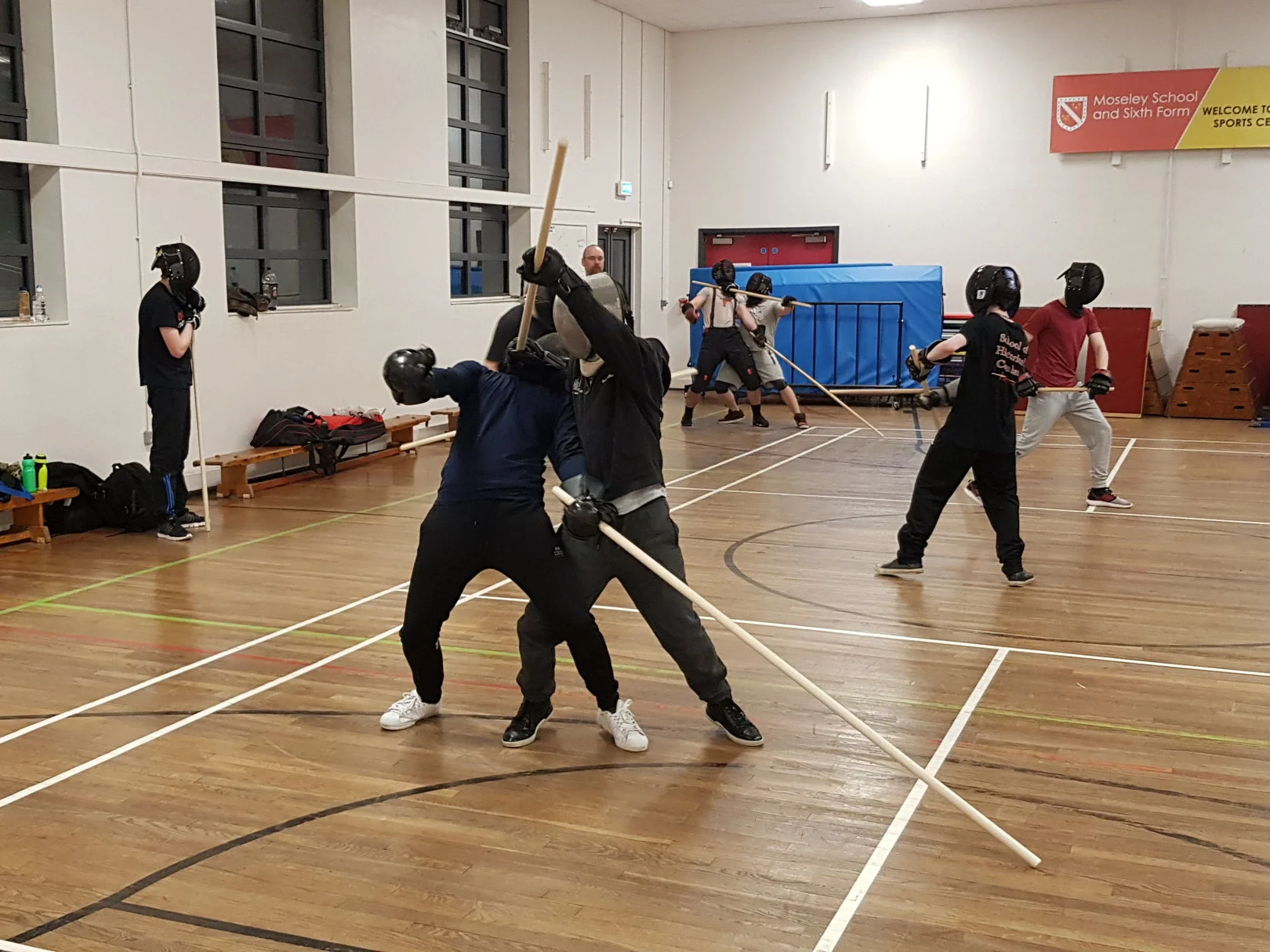What is HEMA?
Historical European martial arts (HEMA) refers to martial arts of European origin, particularly those that were practised during the late Medieval and Renaissance periods of European history. Many of these arts had previously died out or evolved into very different, often sportified forms (such as Olympic fencing, Greco-Roman wrestling, or boxing).
We are part of a a larger community dedicated to the study, reconstruction, practice and promotion of these traditional European fighting arts, based on the study of surviving printed technical sources, most of which date from around 1300AD onwards, with more being discovered all the time. The sources we have to draw from depict and describe both armed and unarmed combat with a wide variety of weapons, in armour or civilian clothing, covering techniques for dueling, self-defence, and even military combat.
We study and interpret these sources, so that we might teach the fighting systems as fully-functioning modern martial arts. To this end, we use safe modern equipment: our training swords are blunt and made from durable plastics or high quality steel; we use fencing masks, padded gloves and other protective gear to keep ourselves and our training partners safe. By using modern equipment, we can practise these historical skills in a comprehensive and complete fashion without significant worry about safety.
The practice of European martial arts have grown rapidly in the last decade, with many new groups establishing themselves, more and bigger events, more competitions and an increasing number of students. HEMA has featured on national TV networks, in national newspapers and in academic publications.
OUR CURRICULUM
Our beginner's curriculum focuses primarily on the Gemainfechten - or common fencing - source material of the late 15th and early-to-mid 16th century. Three key sources make up the bulk of this syllabus: the anonymous Kölner Fechtbuch, Andre Paurñfeyndt's Ergrundung Ritterlicher Kunst der Fechterey ("Founding of the Chivalric Art of Swordplay"), and the works of Joachim Meyer, particularly his 1570 manual titled Gründtliche Beschreibung der Kunst des Fechtens ("A Thorough Description of the Art of Fencing").
Once students have demonstrated a solid understanding and application of the fundamentals of historical fencing, they will begin their training in the core concepts and techniques of Johannes Liechtenauer, one of the most influential fencing masters of the late Medieval period. The two main Liechtenauer sources we use are the manuscript known as MS Dresd.C.487, often called the "Ringeck manuscript", and Codex Hs.3227a, also known as the Nuremberg Hausbuch or the "Döbringer manuscript".
Through our curriculum, students will learn to fight primarily with the longsword, but also learn unarmed techniques including throws and strikes, as well as fighting with the dagger, spear/staff, and sword & buckler.

